Wukalina Walk in Tasmania: a trek with tradition
Say good-bye to bitumen roads, Wi-Fi and preconceptions on an Indigenous walk in Tasmania.

Launceston buzzes on a Saturday night with hoons doing blockies. It’s such a ritual that not a head is turned nor an eyelid batted as the souped-up sedans drone the streets like angry wasps. Maybe even the snow monkeys, resident in Lonnie’s City Park, have learned to sleep through the antics.
Come Sunday morning, much of the city still slumbers but for me it’s time to journey from modern-day Tasmania (bye bitumen roads, bye Wi-Fi, bye preconceptions) to a time when a rising sea separated this place from the mainland 12,000 years ago. The vehicle for this time-travelling is a multi-day hike that’s as much about Aboriginal Tasmanians’ resurgent culture as it is about exploring the untamed beaches that lead south to the Bay of Fires.

I join eight fellow walkers at a community centre where portraits of elders past and present surround us. Here we pare our stuff even more (amazing how an imminent trek sharpens the packing) and add bits we’re borrowing (I’m skipping gaiters and walking poles but taking a waterproof jacket and backpack). Over tea and scones baked by Aunty Sharon Holbrook, we meet our palawa (Tasmanian Aboriginal) guides, Uncle Hank Horton, Carleeta Thomas and Jam Graham-Blair. We’re told no question is too stupid as we’re shown quilts stitched with stories, including one incorporating pictures of young women dressed for a dance, their bare arms powdered white.
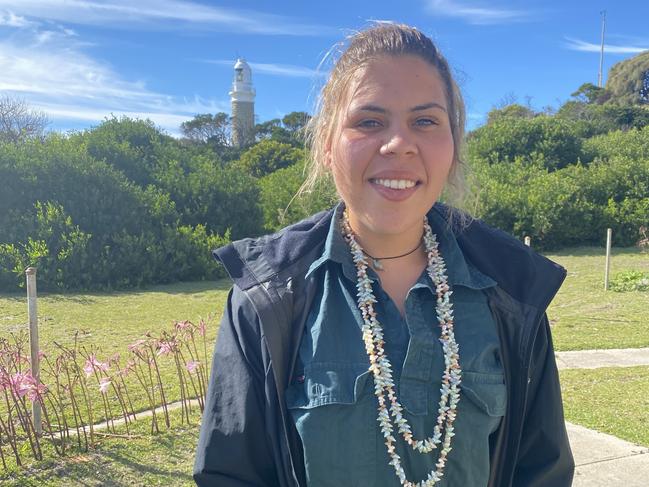
Many of the stories revolve around Cape Barren Island in Bass Strait’s Furneaux Group, once part of the ancient land bridge. It looms large in recent palawa history as it housed a reserve for descendants of Aboriginal women and European sealers from 1881 until 1951. When Thomas was born on truwana/Cape Barren Island in 2000, she was the last baby born there before the hospital was demolished. Her childhood memories include post-school sliding down a slope the kids nicknamed Cardboard Hill. She’s also a keen mutton-birder, helping maintain this unbroken cultural practice. Her year is arranged around working the season each April on Big Dog Island between truwana and Flinders Island. Her favourite job in the sheds is cleaning the birds.
We spy the islands from Bridport, a refreshment stop. Arriving in the carpark below Mount William, nicknamed Bill’s Hill because it’s not that mountainous at 216m, Thomas hits play on her phone. Our ears fill with Dewayne Everettsmith’s melaythina, the first commercially available song sung in palawa kani.
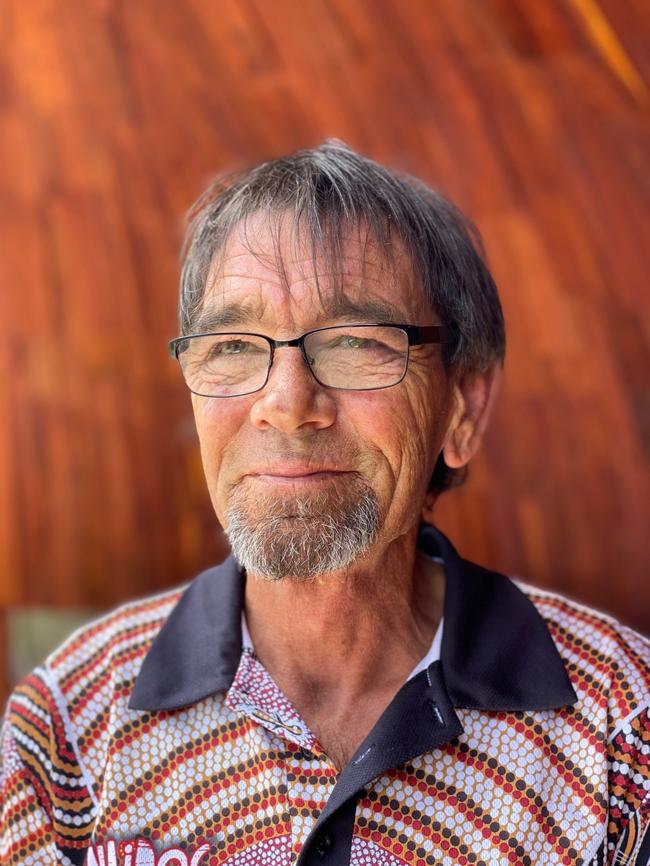
In this modern constructed language (written in lower case, based on various Aboriginal languages once spoken in lutruwita/Tasmania), the peak is called wukalina, meaning “woman’s breast”. On its summit our guides – astonished at the crystal-clear air – joke about waving to family over on the islands. My phone beeps with a message from home. It will be my last connection to modern life for days.
Back at the carpark, we prepare to strike out for the coast. It’s flat but slow going; spiders have floated endless silken filaments across our path. Horton clears the webs with a stick, gently popping arachnids back onto branches. We admire starbursts of grass trees and chew thirst-quenching blades of lomandra. A leech springs onto a bare arm but is discovered immediately. Someone finally asks, “How much further?”
My hips are aching (should have trained carrying a pack) so the answer – “Twenty minutes, if that” – sounds just doable. Perhaps Horton is merely keeping up our spirits because, if I’d known it was another 38, I would have flopped onto my back and waved my limbs in protest like a dying cockroach.
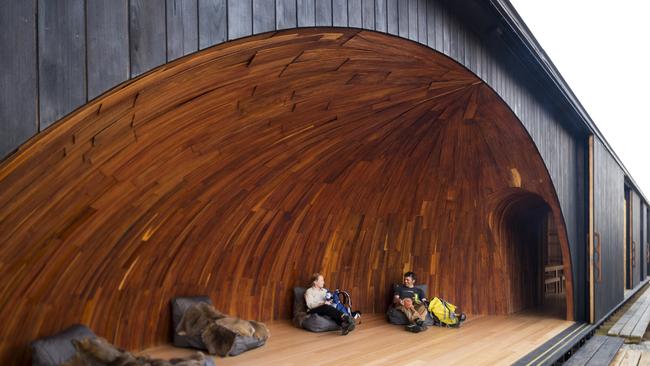
All is forgiven when we straggle into camp, an architectural tour de force tucked among silver banksias. Flutes of Arras sparkling wine await in the timber-lined half-dome living room inspired by traditional shelters and cradled within a black box of charred silver-top ash. The camp – a much-awarded design from Tasmanian architects Taylor and Hinds – locks down like origami between tours. We gobble cheese, wallaby salami and scallops sizzled in their shells on the campfire. After a family-style meal in the Tasmanian oak-lined kitchen/dining room, I flop into my hut (which contains a cavity for nesting birds) and fall asleep to the sounds of wind, bush, night creatures and crashing ocean.

Day two dawns: it’s beach time. Dolphins frolic alongside as we squelch north to a giant dune. Our guides point out the layering of shells. They call it a cultural living place; archeologists would call it a midden. Another walking group passes by, not seeing what’s in plain sight.
Back at camp, Thomas leads a craft afternoon. We’ve admired a spectacular necklace of marina/maireener (rainbow kelp) shells she carries in a basket, a gift from environmentalist Bob Brown. It’s something so precious she can barely stand to wear it. Collecting these shells, unveiling their iridescence and threading them into necklaces is a cultural practice handed down through generations of women. We also twist plants into rope and turn tough bull kelp into nifty water carriers.
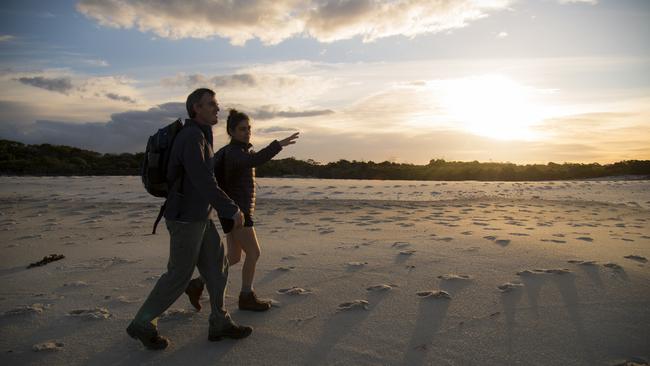
After this revelatory day, which includes muttonbird curry for dinner, we’re braced for the 17km beach hike to larapuna/Eddystone Point, a parcel of land leased to the Tasmanian Aboriginal Land Council for 40 years. It’s tough but there are spirit-soaring moments such as an encounter with a yellow-tailed black cockatoo. The 35m pink granite lighthouse is a beacon for me, appearing both tantalisingly close and far away throughout the day.
At last we reach the renovated keeper’s cottage encircled by wallaby-trimmed lawns. The only way you can stay in the cottage (where some people have heard inexplicable sounds such as the disconnected telephone ringing) and climb the lighthouse is to earn it – by walking on country for days, by listening to stories (no matter how much some colonial tales will hurt your heart) and by opening your mind to a history that differs to the one many learned at school, including the myth that Truganini was the last Tasmanian Aboriginal when she died in 1876.
“I think it’s about time we stopped the history from being a mystery,” says Horton. “There have been identity losses … that are still playing out in our community … but the bulk of the community, we’re very strong, very vibrant and very proud Aboriginal people who want to show people our country.”

More to the story
The wukalina Walk might leave you obsessed with the luminescent beauty of maireener (kelp) shells. Find out more about the cultural practice of making shell jewellery at two institutions. Launceston’s Queen Victoria Museum and Art Gallery displays strands of king, blue, green and stripy maireeners. You might also see a necklace of black crow shells that was probably owned and worn by Truganini. In Hobart’s Tasmanian Museum and Art Gallery, information panels detail how the shells can be collected only at low tide. They’re treated to expose their nacre (pearly layer) before being polished with muttonbird oil. Jewellery makers then pierce the shells with a bone point or kangaroo’s eye tooth before stringing them onto animal sinew or twine. On the wukalina Walk, the pointy end of a modern sewing implement (a seam ripper or unpicker) is used to pierce the shells after they’re treated in a solution. In February 2021, TMAG and the Royal Society of Tasmania issued apologies for the way they had treated ancestral remains and artefacts; wukalina guide and cultural knowledge holder, Jam Graham-Blair, co-presided over the event’s smoking and cleansing ceremony.
In the know
The First Nations-owned and led four-day, three-night wukalina Walk operates from late September-early October through to Easter. Departs Launceston on Sundays.
Katrina Lobley was a guest of wukalina Walk and Tourism Tasmania.
This story was originally published in May 2021 and has since been updated.

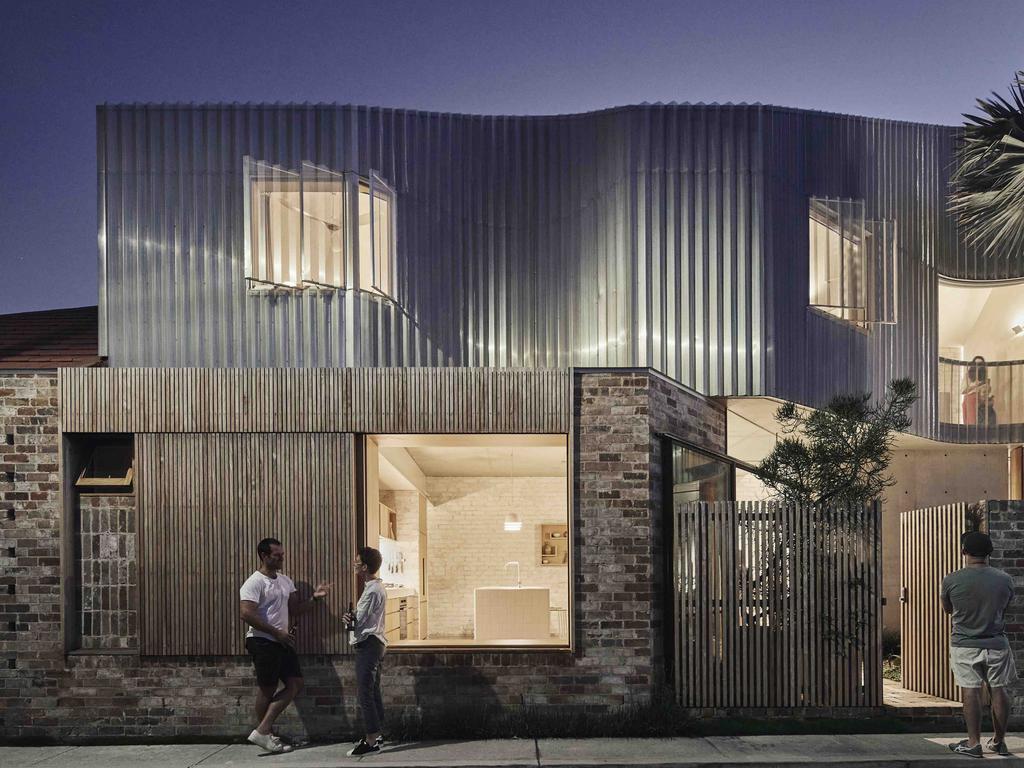


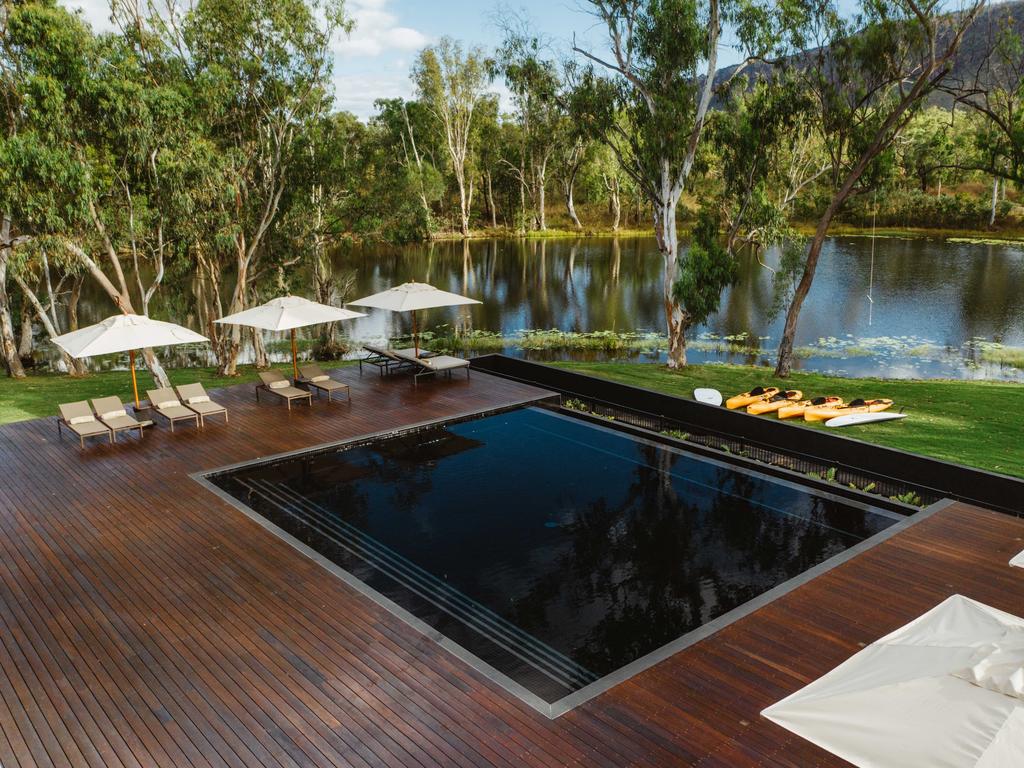
To join the conversation, please log in. Don't have an account? Register
Join the conversation, you are commenting as Logout